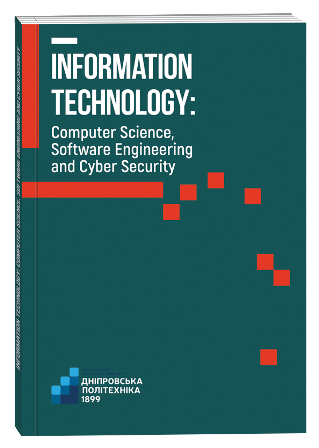A MODEL FOR DETECTING CURRENT THREATS TO INFORMATION SECURITY OF DATA PROCESSED IN A BLOCKCHAIN SYSTEM
DOI:
https://doi.org/10.32782/IT/2025-1-6Keywords:
blockchain, digital ledger, information systems, critical infrastructure systems, information security.Abstract
Aim of the Study. The goal of this research is to develop a comprehensive model for detecting and assessing information security threats to blockchain systems used in critical infrastructure. This entails enhancing the effectiveness of detecting and counteracting security threats and ensuring high adaptability to various threat scenarios when integrated with existing security systems. Methodology. The proposed model is based on a systematic approach and combines the mathematical apparatus of probability theory, graph theory, and decision theory. The main components of the model are a multilevel monitoring system using specialized software agents and a mathematical risk assessment apparatus. Threat assessment is carried out using a comprehensive formula that takes into account the probability of threats, potential losses, complexity of implementation, and time of incident detection. Scientific Novelty. A comprehensive approach to assessing the security of blockchain systems in critical infrastructure has been proposed, which takes into account all aspects of system functioning. A mathematical model for threat assessment has been developed, which formalizes the processes of detecting and assessing risks, ensuring objectivity and reproducibility of results. The model’s distinctive features include high flexibility and ability to adapt to changes in the threat environment, as well as scalability and the possibility of integration with existing security systems. Conclusions. An effective model for detecting and assessing information security threats for blockchain systems in critical infrastructure has been developed. The process included creating a comprehensive monitoring system and a mathematical risk assessment apparatus. The model demonstrates high adaptability to various threat scenarios and confirms its effectiveness during practical testing. The advantages of the approach used are comprehensive security assessment, system flexibility, and solution scalability. For successful implementation of the model, a structured approach has been developed, which includes auditing the existing infrastructure, phased implementation, personnel training, and creating an effective feedback system. Future research directions are aimed at expanding the range of analyzed threats, improving risk assessment algorithms using machine learning methods, and enhancing automation mechanisms.
References
Habib G., Sharma S., Ibrahim S., Ahmad I., Qureshi S., Ishfaq M. Blockchain technology: benefits, challenges, applications, and integration of blockchain technology with cloud computing. Future Internet. 2022. Vol. 14. № 11. P. 341.
Sytnyk R., Hnatushenko Vik. V. Data flow management in information systems using blockchain technology. Naukovyi Visnyk Natsionalnoho Hirnychoho Universytetu. 2024. Vol. 3. P. 142–148.
Khan S. N., Loukil F., Ghedira-Guegan C., Benkhelifa E., Bani-Hani A. Blockchain smart contracts: Applications, challenges, and future trends. Peer-to-peer Networking and Applications. 2021. Vol. 14. P. 2901–2925.
Aggarwal S., Kumar N. Attacks on blockchain. In Advances in computers. Elsevier. 2021. Vol. 121. P. 399–410.
Yaqoob I., Salah K., Jayaraman R., Al-Hammadi Y. Blockchain for healthcare data management: opportunities, challenges, and future recommendations. Neural Computing and Applications. 2022. P. 1–16.
Vionis P., Kotsilieris T. The potential of blockchain technology and smart contracts in the energy sector: a review. Applied Sciences. 2023. Vol. 14. № 1. P. 253.
Platt M., McBurney P. Sybil in the haystack: A comprehensive review of blockchain consensus mechanisms in search of strong Sybil attack resistance. Algorithms. 2023. Vol. 16. № 1. P. 34.
Kushwaha S. S., Joshi S., Singh D., Kaur M., Lee H. N. Systematic review of security vulnerabilities in ethereum blockchain smart contract. IEEE Access. 2022. Vol. 10. P. 6605–6621.







